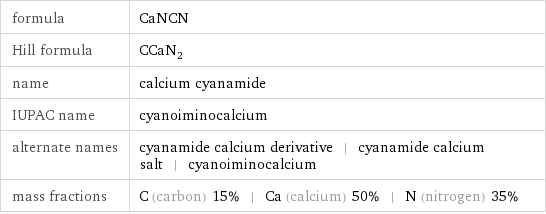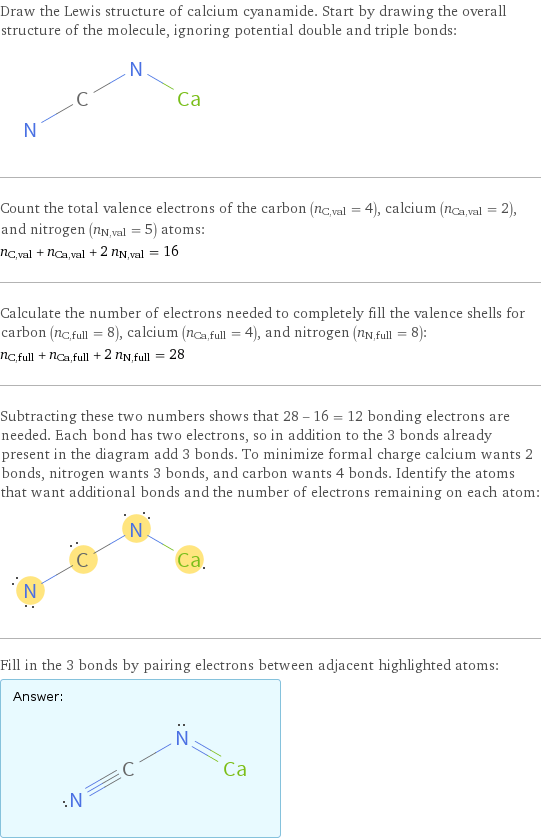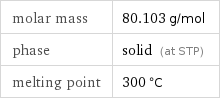Input interpretation

calcium cyanamide
Chemical names and formulas

formula | CaNCN Hill formula | CCaN_2 name | calcium cyanamide IUPAC name | cyanoiminocalcium alternate names | cyanamide calcium derivative | cyanamide calcium salt | cyanoiminocalcium mass fractions | C (carbon) 15% | Ca (calcium) 50% | N (nitrogen) 35%
Lewis structure

Draw the Lewis structure of calcium cyanamide. Start by drawing the overall structure of the molecule, ignoring potential double and triple bonds: Count the total valence electrons of the carbon (n_C, val = 4), calcium (n_Ca, val = 2), and nitrogen (n_N, val = 5) atoms: n_C, val + n_Ca, val + 2 n_N, val = 16 Calculate the number of electrons needed to completely fill the valence shells for carbon (n_C, full = 8), calcium (n_Ca, full = 4), and nitrogen (n_N, full = 8): n_C, full + n_Ca, full + 2 n_N, full = 28 Subtracting these two numbers shows that 28 - 16 = 12 bonding electrons are needed. Each bond has two electrons, so in addition to the 3 bonds already present in the diagram add 3 bonds. To minimize formal charge calcium wants 2 bonds, nitrogen wants 3 bonds, and carbon wants 4 bonds. Identify the atoms that want additional bonds and the number of electrons remaining on each atom: Fill in the 3 bonds by pairing electrons between adjacent highlighted atoms: Answer: | |
Basic properties

molar mass | 80.103 g/mol phase | solid (at STP) melting point | 300 °C
Units

Chemical identifiers
![CAS number | 156-62-7 Beilstein number | 4124391 PubChem CID number | 4685067 PubChem SID number | 24867481 SMILES identifier | C(#N)N=[Ca] InChI identifier | InChI=1/CN2.Ca/c2-1-3;/rCCaN2/c2-4-1-3 RTECS number | GS6000000 MDL number | MFCD00064894](../image_source/cba911d6a60122c00ede68109cbec6d1.png)
CAS number | 156-62-7 Beilstein number | 4124391 PubChem CID number | 4685067 PubChem SID number | 24867481 SMILES identifier | C(#N)N=[Ca] InChI identifier | InChI=1/CN2.Ca/c2-1-3;/rCCaN2/c2-4-1-3 RTECS number | GS6000000 MDL number | MFCD00064894
Toxicity properties

odor | odorless